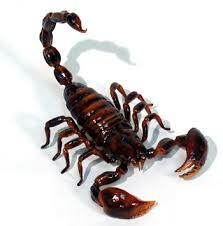Kingdom Animalia
General charcteristicss
- Eukaryotic and multicellualar
- They have no cell walls
- All are heterotrophic
- Most reproduce sexually and few asexually.
- Most show locomotion
It comprises nine phyla but only two will be discussed here; Arthropoda and Chordata
Phylum Arthropoda
- They have jointed appendages hence the name anthropoda
- The body is coverd with hardened exoskeleton made of chitin
- It undergoes moulting that means shedding to allow growth in size
- They are segmented
- Body divided into Head, thorax and abdomen and others celaphalothorax.
- Bilaterally symmetrical.
- They have open circulatory system where blood flows in open cavities, the haemocoel.
- Gaseous exchange is through tracheal system which opens through the spiracles to outside.
- Reproduction is mainly sexual with internal fertilization. The sexes are separate.
This phylum is divided into five classes
Class Crustacea
Examples are Daphnia, crayfish, crab and prawn
Daphnia Crayfish


Crab prawn


General characteristics
- The head and thorax are fused to from cephalothorax
- They have two pairs of antennae
- They have between five and twenty pairs of limbs which are modified for different functions
- Have a pair of compound eyes
- Three pairs of mouths parts
- Gaseous exchange is through pills
General characteristics
- Their body is dorsa-ventrally flattened
- The body is divided into two body parts: the head and the trunk
- Has 15 or more segments
- Each segment has a pair of walking legs
- The head has a pair of simple eyes.
- Head has a pair of antennae
- Have poison claws on the head with secrete poison substance
- Gaseous exchange occurs through tracheal system.
- The sexes are separate.
Class Diplopoda
This class comprises the millipedes


General characteristics
- They have cylindrical body
- Have three body parts
- The body has between 9-100 segments
- Each segment has apair of walking legs
- The head has a pair of short antennae and mandibles.
- They have two clumps of many simple eyes.
- Each body segment has a pair of spiracles for breathing.
- They have no poision claws
Class Diplopoda
This class comprise of Millipedes
General characteristics
- They have cylindrical body
- They have three body parts
- Body has between 9-100 segments.
- Each segment has two pairs of walking legs
- The head has short pairs of antennae and mandibles
- They have two clumps of many simple eyes.
- Each body segment has a pair of spiracles for breathing
- They have no poison claws.
This class includes spiders, scorpions, ticks and mites.
Spider Scorpion Tick



Mite

General characteristics
- The body part has two parts; Cephalothorax and abdomen.
- The cephalothorax consist iof fused head and thorax.
- Theventral side of cephalothorax has two chelicerae each having a claw-like structure, which produces poison that paralyses pray.
- The cephalothorax has four pairs of walking legs each having seven joints.
- Each legs end in two toothed claws.
- They do not have antennae
- Archnids have ling books mostly for gaseous exchange.
- Fused head has eight simple eyes.
Class Insecta
Insects form half of the population of the animals on earth. They occupy all habitats that include air, water and land in all climatic regions of the earth.
General characteristics
- Body is divided into three body parts
- The thorax is made up of three segments with three pairs of legs. Some insects have one or two pairs of wings.
- The head has one pair of antennae
- They have two compound eyes and several simple eyes
- The mouth parts consist of mandibles, maxillae and labium that are modified according to their feeding habits.
- The abdomen is made up of eleven of fewer segments with terminal parts modified for reproduction.
- They breathe through spiracles; gaseous exchange is through tracheal system.
- They undergo complete or incomplete metamorphosis.
- Excreation is through malphigian tubules, which remove uric acid.
NB: Entomology is the study dealing with insects.

